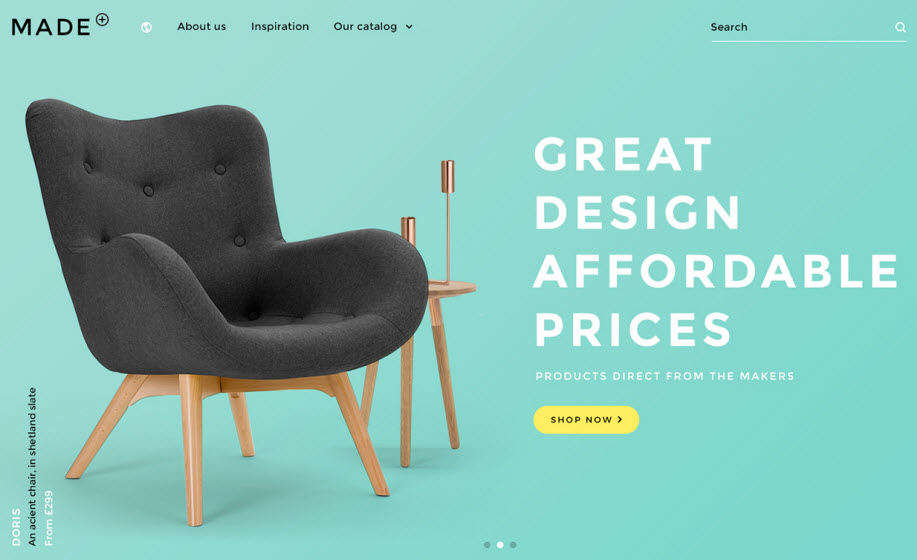Businesses looking to stand out from competition often find it difficult to convey their superiority. This is especially true for businesses whose products are very similar to their competitors. The battle for clicks has led many to rely more heavily on website design.
From accessibility to appearance to user experience, everything needs to be just right. Your business and its credibility is the primary factor behind your bottom line. Your website is an extension of your business, and essentially an online manifestation of the relationship that you want to create with your customers. Having the right web design goes a long way in establishing this relationship.
There’s a lot that goes into web design, and it can be overwhelming for those who aren’t well-versed. In that case, consider working with web design agency that can help identify weak points and transform your site, or listen to your vision and transform it into a reality. After all, website design directly influences how your potential customer views your business.
Steven Ayres, CEO of Rocket55, a full service SEO and web design firm in Minneapolis told me, “Your online presence is commonly the first impression of your business a potential customer will have. If they’re not impressed with your site design and it’s not easy to find what they’re looking for, they’ll probably look elsewhere. Additionally, it’s important that your design be responsive, meaning that your site doesn’t just look good on desktop, but has a design that conforms to mobile and tablet devices as well.”
Brand Image and First Impression
When visitors land on your website, you have to give them a reason to stick around. Yes, content is vital. But the first impression you make will dictate whether they give it a chance. A study by Adobe found out that within a 15 minute time period, 66% of people would prefer viewing an aesthetically pleasing website compared to a simple one. What this means is that web design matters. And not only does it matter for creating a great first impression — but is necessary to create enough value to lead visitors to “stick.”
The web design of your site needs to suit your target audience, too. A branding agency might want to use more typography and bolder headlines. If you are in the entertainment business, you might want a colorful web design with elements that pop. But this won’t work for a healthcare provider or a tax consultant. Your web design should convey the tone of the brand, and fit with the industry. Brand image is your primary method for ensuring that you have returning visitors. Make the right first impression, follow it up with quality content, and you’re well on your way to building a brand that people trust.
Responsiveness
Imagine that you visit a website on mobile and are faced with several issues: the fonts are too small, the images are disproportionate, and you can’t find your way to or around the menu. What would you do? How fast would you leave? Internet browsing through mobiles and tablets has become the norm, and visitors expect mobile sites to be optimized for their mobile browsing experience. Today, around 60% of all internet users are coming from mobile sources, if you don’t have a responsive web design that caters to them, you’re missing out on a chunk of the market.
Online shopping trends reinforce this argument. For example, in 2016, Black Friday sales generated $3.34 billion. Of those, $1.2 billion were from mobile sources. This is a 33% increase from 2015. As those sales indicate, mobile usage is growing. People enjoy shopping, browsing, and absorbing information on the go. Responsive sites make is easy to cater to those demands. With responsive web design, the website is automatically recalibrated and adjusted to fit the size of the user’s device of choice. It provides a much more intuitive, clean experience, and helps sites operate more quickly.
User-friendliness and Accessibility
Visitors prefer websites that give them what they want quickly. They don’t have time to waste and would rather jump to your competitor’s website rather than wait for yours to load. The same goes for slow-loading images. In fact, according to Adobe, 39% of people will leave your website if the web page takes too long to load.
You also have to consider conversions. All visitors should find their way around easily, and the menu should be well defined. You don’t want to lose customers because they got lost trying to figure out their next step. The call to action should be clear and prominent. If you’re an eCommerce business, you want your purchasing and payment mechanism to be efficient.
All of the factors have an effect on SERPs. Google has stated on many occasions that user-experience is a key component of SEO, whether it’s mobile responsiveness, loading speed or the architecture of your site. Even if you put SEO to the side, your web design still needs to address current market needs to convert.
Photo: Behance/bartebbekink

